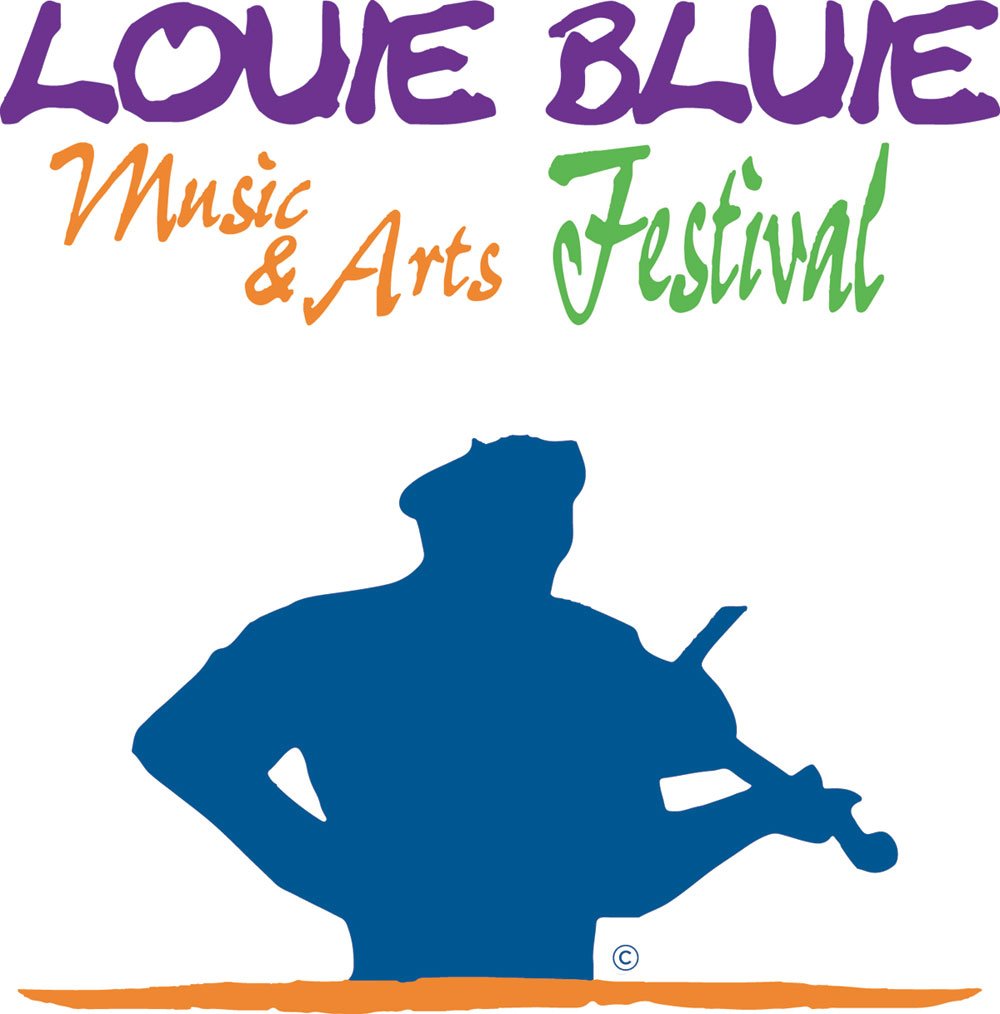Videos from Our 2022 Festival
Our thanks to Patrick Murphy-Racey for these videos from our 2022 Festival which will introduce you to Howard and the Festival in a new way.
The accomplished James "Sparky" Rucker, who knew Howard Armstrong, discusses Howard Armstrong's legacy and immense influence which continues through today.
Louie Bluie Music and Arts Festival Program Committee Co-Chair Chris Durman speaks about Howard's legacy not only on music, but the larger influence Howard has on today's society and culture.
Tony Branam, with the Louie Bluie Festival, discusses the Festival and its impact locally.
William "Bill" Steber of the Jake Leg Stompers talks about Howard Armstrong's influence on him and today.
Multi-talented instrumentalist, storyteller, educator, folklorist, and vocalist; Kelle Jolly discusses Howard Armstrong and the importance of the Louie Bluie Music and Arts Festival.
Campbell Culture Coalition President Bradley Smiddy discusses the legacy of Howard "Louie Bluie" Armstrong and Howard's deep influence in today's Campbell County.
How to Get Here:
A community celebration of Howard "Louie Bluie" Armstrong
Learn about Howard “Louie Bluie” Armstrong and a life worth celebration:
Howard "Louie Bluie" Armstrong — An Inspiration
In 2020, the Campbell Culture Coalition went virtual for the 14th Annual Louie Bluie Music and Arts Festival. After taking a year off in 2021 due to the COVID-19 pandemic and to protect public safety, the festival made a triumphant return in 2022 with the largest one-day festival ever of nearly 8,000 attendees. Thanks to you!
In 2023 - attendance grew even larger as the Festival neared 10,000 attendees! What’s in store for 2024?
On September 28, 2024; the 17th Annual Louie Bluie Music and Arts Festival will be held from 10am-6pm at Cove Lake State Park. Admission is FREE! (donations are welcome)
Three stages of music (performers will be named as we get closer to the festival - bookmark our website or follow us on Facebook)
The return of the massively popular - Jam Tent (bring your own instrument and jam with us)!
LaFollette Old Fiddler’s Convention Tribute
Tennessee Arts Commission Folklife Program Traditional Artists Apprenticeship Program Folklife Demonstrators - Louie Bluie is the first-ever Tennessee Partner Festival for this TN Arts Commission program and you get to experience barrel-making, fiddle-making, gourd-making, and more - up close and one-on-one; only at Louie Bluie!
The Family Nature-ing Area - an area dedicated to families and people of any age getting hands-on to learn and appreciate our TN State Parks and 48% of Campbell County Land being public!
Quilting Pavilion
Art Exhibit
Multiple Food Vendors (no two are the same)!
Arts & Crafts Village (with dozens of vendors)!
Go to our “Registrations” page - If you are interested in being a part of the Food Court, Arts and Crafts Village, Judged Quilting, or if you want to learn more about the 2024 Art Exhibit or being on the grounds as a nonprofit!
Volunteer!
Did you know that the Louie Bluie Music and Arts Festival is solely produced by volunteers?! It’s true and we need your help to keep Campbell County’s largest festival going!
We have multiple shifts and opportunities to fit whatever your interest may be - and - what better way to support your community than volunteering at a Festival held on the grounds of one of Tennessee’s most stunning State Parks!
Sign Up Today at: Volunteer — Louie Bluie Music & Arts Festival
Be a Festival Sponsor
Learn more about branding & sponsorship opportunities in our Sponsor Prospectus.
2020 Virtual Festival
Remember how we said the 2020 Louie Bluie Music and Arts Festival went virtual? It’s true and…
We captured the entire day on video, so grab some popcorn and settle in for a day full of exciting music and inspiring stories. Watch the whole show! Or, visit the 2020 festival page to view the schedule and start the video at a specific performer segment.
The show featured live performances (filmed under COVID-19 safety conditions) and a mix of material from the festival's vast archives.
The Louie Bluie Music and Arts Festival is a production of the 501(c)(3) nonprofit organization:
Festival Memories
View select images that make up memories from past years. Click the year to see the year’s festival highlights.
Louie Bluie Festival in the News
In 2022, The Daily Yonder wrote a fantastic article about the Louie Bluie Music & Arts Festival in Caryville, Tennessee. Read all about it here!
Photo Credits:
LB 2024 Photography & Videography provided by
Gary Heatherly, Chair – Knoxville, TN
Peter Koczera, Consultant – McKinleyville, CA
Robert Batey – Sevierville, TN
Greg Blackmon - Knoxville, TN
Tony Long - Knoxville TN
Bob Giasson – Powell, TN
Patrick Murphy-Racey, Videography, Powell, TN
Carlos Jones, Knoxville, TN
Douglas Hubbard, Knoxville, TN
LB 2023 Photography & Videography provided by:
Gary Heatherly Photography
Bob Glasson
Greg Blackmon
Tony Long
Robert Batey
LB 2022 Photography & Videography provided by:
Gary Heatherly Photography
Greg Blackmon
Mike Hallman
Robert Batey
Patrick Murphy-Racey
Tony Long
Steve Anderson
LB 2020 Photography & Videography provided by:
Patrick Murphy-Racey
Tony Long
Greg Blackmon
Morgan McMullen
LB 2019 Photography provided by:
Gary Heatherly Photography
Daniel Taylor
Douglas Hubbard
Eric Smith
Greg Blackmon
Morris Brady
Tony Long
Justin Fee
LB 2018 Photography provided by:
Gary Heatherly Photography
Peter Koczera/Kozy Vue Photography
Holly Rainey
Jessica Tezak
Daniel Taylor
Eric Smith
Black Tie 360 Photography (Carol & Don Humphrey)
LB 2017 Photography provided by:
Gary Heatherly Photography
Peter Koczera/Kozy Vue Photography
David Luttrell
John Edwin May
LB 2016 Photography provided by:
Gary Heatherly Photography
Peter Koczera/Kozy Vue Photography
Blacktie 360 Photography (Carol & Don Humphrey)
LB 2015 Photography provided by:
Gary Heatherly Photography
Peter Koczera/Kozy Vue Photography
Blacktie 360 Photography (Carol & Don Humphrey)
LB 2014 Photography provided by:
Gary Heatherly Photography
Peter Koczera/Kozy Vue Photography
Blacktie 360 Photography (Carol & Don Humphrey)



